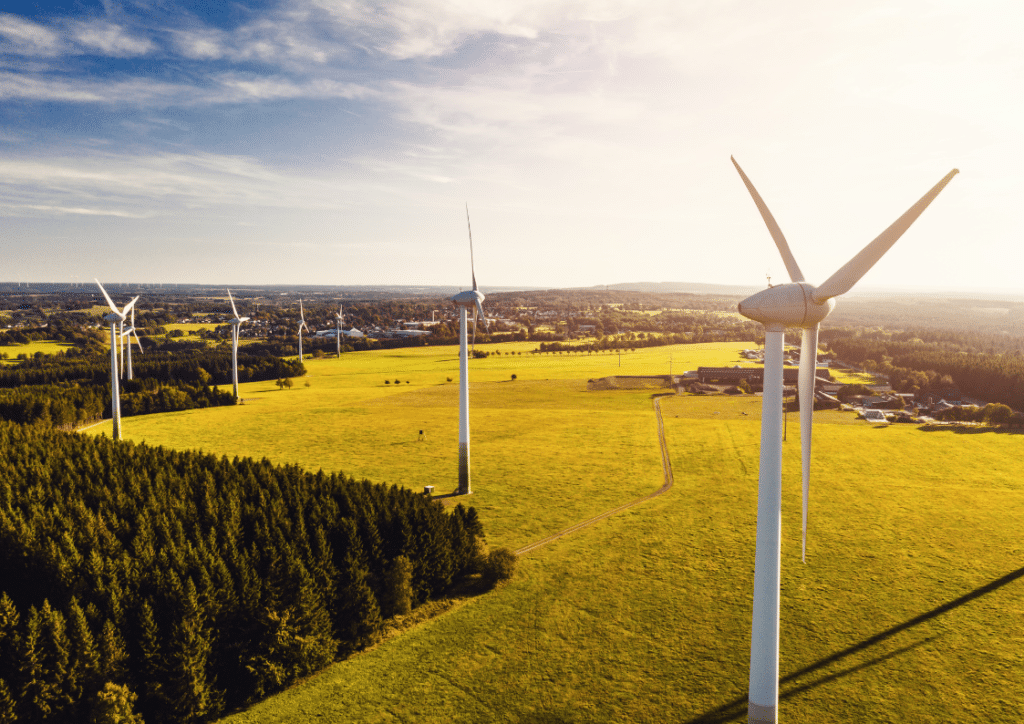COVID-19 and climate change are more connected than one might think. By adopting processes powered by renewable clean energy, we can address the warming of our planet as well as combat current and future pandemics.
—
If the past year has shown us nothing else, it’s that the seemingly impossible can occur time and again. Many people claim the COVID-19 pandemic was unprecedented and a once-in-a-lifetime occurrence, but as we’ll discover, that assumption is unfortunately far from the truth.
One study, by ProPublica, estimates that “more than 3,200 strains of coronaviruses already exist among bats, awaiting an opportunity to jump to people.” And that’s just one environmental consequence of the unsustainable energy practices against which our society is propped.
In addition to viruses, climate change and other harmful impacts of human habitation have the potential to completely upheave civilisation. If we’re interested in sticking around for the long haul, it’s time to get serious about sustainability practices and invest in renewable and clean energy. Read on to learn how changes in our energy practices are necessary to stave off future pandemics.
A Brief Lesson on Pandemics
Although many regard the COVID-19 pandemic as an anomaly, that’s simply not the case. Only a century ago, the Spanish Influenza swept the planet, killing an estimated 50 million people, although record-keeping habits of the period make it impossible to indicate a precise number. And that’s not to mention the Bubonic Plague and the numerous other instances of documented pandemics we’ve experienced throughout our history on earth.
In short, COVID-19 is not entirely unprecedented. In fact, for years before the initial outbreak, epidemiologists had been warning of an event just like this, imploring public officials to adopt emergency safety protocols in case of a public health disaster.
As we move toward the future, we shouldn’t discount the possibility of another pandemic, especially as climate change picks up and the human toll on the environment becomes even more severe. To prepare for the future of public health, we’ll also need a larger number of professional epidemiologists who understand disease and disease control, no matter if the shift to renewable clean energy is a success or not.
As is, epidemiologists are predicting the recent uptick in COVID-19 variants will have serious medical implications when combined with lax safety regulations. Some even predict the vaccine will be rendered completely inefficient within a year due to virus mutation.
The Human Impact on the Environment
For many years, we humans underestimated our environmental impact on the planet. Why? Part of the reason is that the ocean was absorbing vast amounts of carbon dioxide and pollutants, seemingly minimising our carbon footprint.
But even the ocean has its limits, and unless people are willing to make some changes in both their personal and professional lives, the Earth will no longer be able to support us. Already, severe wildfires and hurricanes are sweeping the planet, sometimes not even confined to specific seasons or conditions. General global warming temperatures, deforestation, human economic activity, and loss of wild habitat and creatures all contribute to the decreasing biodiversity our planet faces.
Essentially, climate change “has altered the distribution of some infectious disease vectors, the seasonal distribution of some allergenic pollen species, and increased heat wave-related deaths.”
Climate change has been a contributor to the planet’s extinction crisis for decades, and this, in turn, contributes to humans looking to alternative sources for both food and commerce. In China and other parts of the world, wildlife exploitation and habitat loss have fed the risk of myriad infectious diseases, not just COVID-19.
These zoonotic diseases, diseases that come from animals, have been the sources of most of the deadliest diseases to spread from animals to humans in recent history. In many ways, it’s humans’ own fault as we’ve overfished oceans and rivers, over deforested jungles, and imported millions of animals and animal parts into the United States.
Because we’ve weakened the Earth’s natural defence mechanisms, it’s now up to us to take responsibility and reverse the unsustainable nature of our lives.
You might also like: The Growth of Renewable Energy: What Does the Future Hold?
Ways to Transition to Clean Energy
If we have any intention of preserving the earth as a safe and comfortable home, it’s necessary to adopt renewable energy methods. Some of the best ways of tapping into the future of renewable energy are:
Solar Technology
Solar technology is expected to become increasingly affordable over the coming years, with some industry experts even predicting the US will double its solar installations by 2023. American homeowners are eager to adopt solar technology for the most part, but initial installation costs hold many back from taking the plunge. Improving solar energy efficiency will lead to increased yields both in power produced and financial returns, making solar technology a more feasible option for everyday Americans.
Wind Farm
Wind energy is another widely-used renewable resource. How does it work? Wind spins a turbine, which in turn powers a generator that can deliver energy to households and businesses. China and the US are expected to lead the charge in this industry, as renewable energy is projected to grow significantly in the coming years. A Wind farm can be constructed both on and offshore and are one of the most cost-effective methods on this list of renewable energy resources.
Hydro Energy
Hydropower plants work by harnessing the power of falling water with the help of a turbine. Hydro energy is currently the world’s leading source of renewable energy, and that is expected to remain constant over the next few years. While construction of new projects may have slowed in some nations, untapped markets in areas like sub-Saharan Africa possess a vast potential that has yet to be explored.
Geothermal
Energy created and stored in the earth is classified as geothermal. Once harvested, geothermal energy is typically used for electricity. Iceland is at the head of the pack when it comes to geothermal energy. The country’s numerous underground hot springs allow it to power a quarter of its electrical needs and “over 87% of housing and building needs.”
Combatting Future Pandemics With the Help of Clean Energy
We’re not quite out of the woods yet with the COVID-19 pandemic. However, we’re now equipped with the time, knowledge, and resources to dedicate toward developing sources of renewable energy.
This pandemic has been a wake-up call for most of us, triggering reforms in the workplace and social sphere, but when it comes to climate change, there is still much work to be done. The only way forward is to work tirelessly for a more sustainable planet, to mitigate the risks climate change presents to our health and the health of the planet we call home.


















